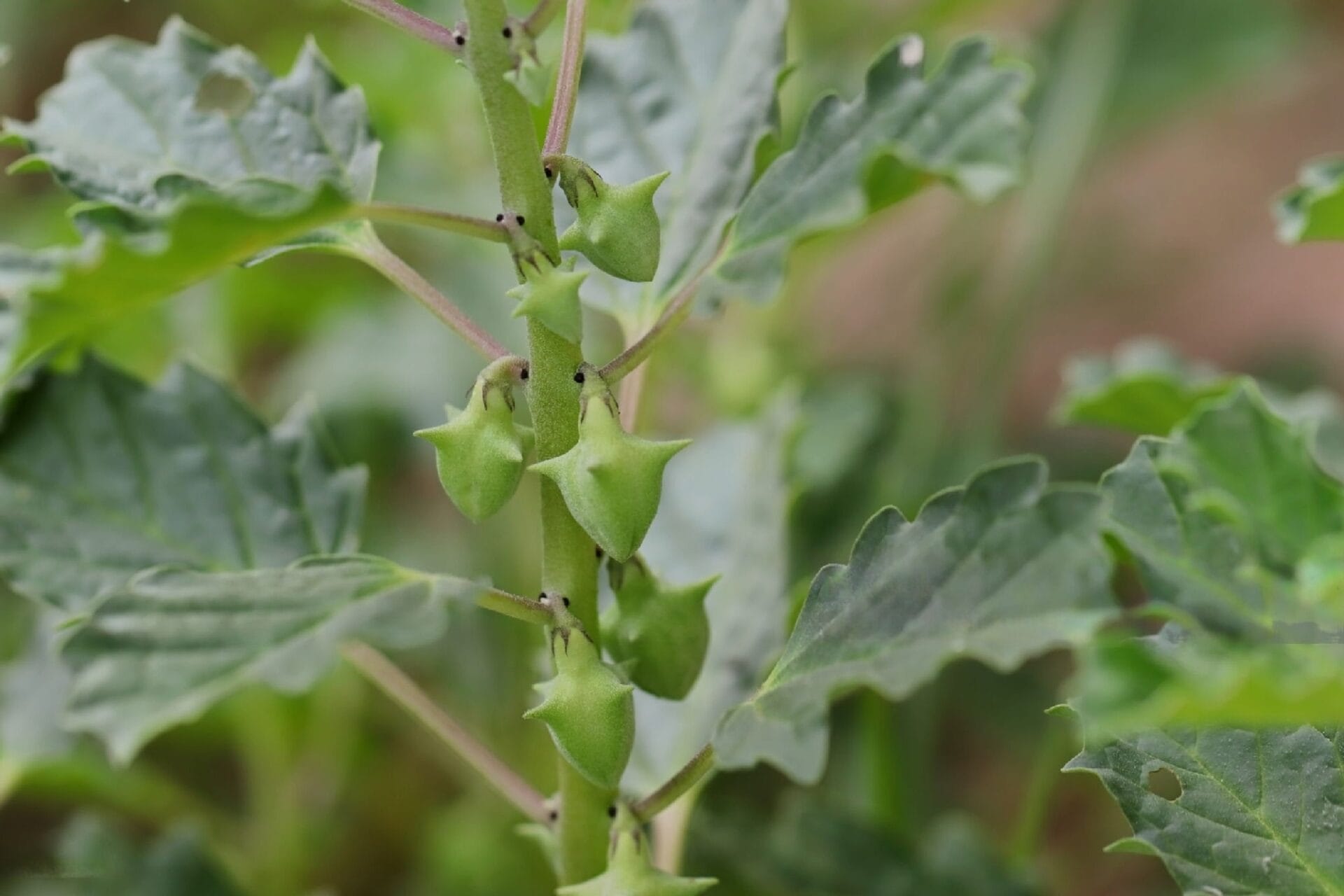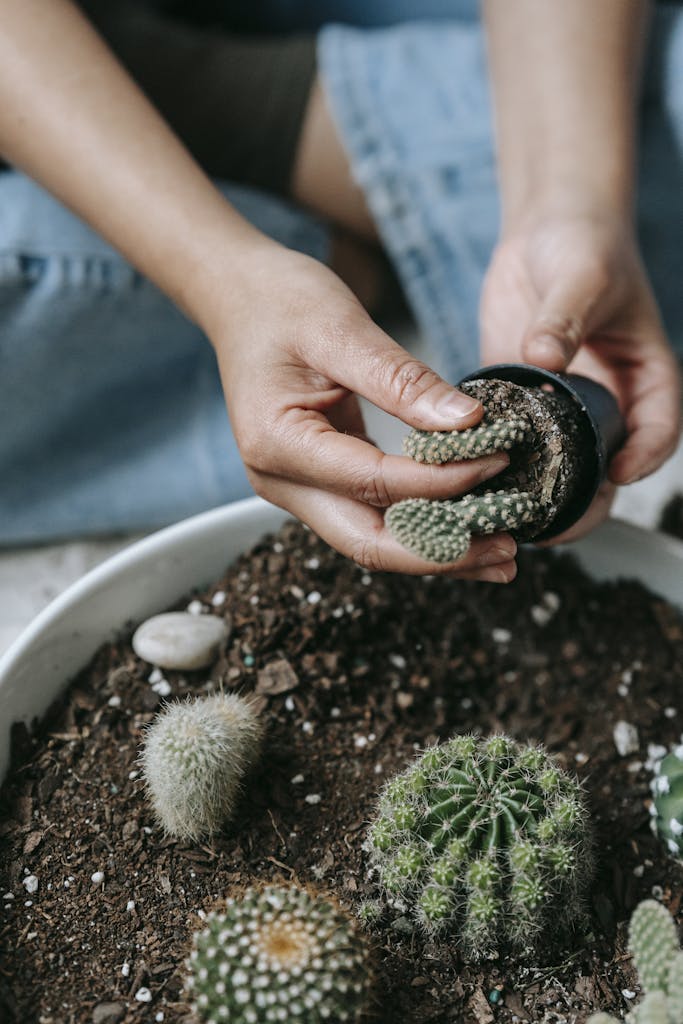How To Get Rid Of Goat Head Thorns: Effective Strategies
Do you regularly come across goat head thorns when you’re exploring outside? Like me, you’ve likely been stabbed by them on numerous occasions. These bothersome weeds aren’t just visually unappealing – they pose a real threat too. Learn how to manage these formidable thorns with reliable and efficient methods.
Let’s dig in and learn how to eliminate these prickly nuisances once and for all!
Key Takeaways
- Understanding the characteristics of goat head weed and its seeds is crucial for effective control.
- It can pose hazards to gardens, plants, and pets.
- Identifying regions where it thrives and is prone to invasion is important for targeted control efforts.
- Various methods, such as manual weed control, thorn extraction, mechanical tools, and herbicides, can be used to get rid of goat head thorns.
Understanding the Goat Head Thorn: Know What You’re Up Against
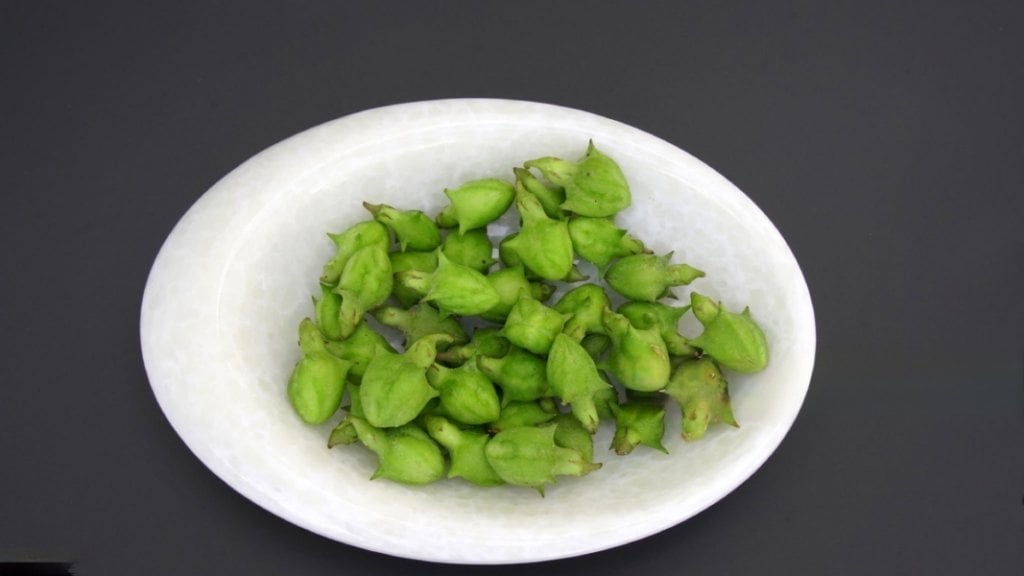
First off, let’s get familiar with what a Goat Head weed is and its key characteristics.
Then, we’ll talk about the potential hazards these thorns pose not just to our feet but to our environment as well.
Lastly, I’ll help you identify the regions most prone to these pesky invaders.
Examining the Characteristics of Goat Head Weeds
In fighting against the pesky goat head thorns, I’m delving into the heart of the problem by examining the characteristics of the very weeds they come from. Knowing your enemy is half the battle, right? So, let’s break it down:
Goat head weed: This plant produces the notorious goat head thorns. It’s a low-growing annual weed with broad, flat leaves and yellow flowers.
Goat head plant: It’s the same as the goat head weed. One plant can generate thousands of goat head seeds.
Goat head seeds: These are the culprits! They’re hard, spiky, and incredibly resilient, making them difficult to eradicate.
Realizing the Hazards Posed by Goat Head Thorns
I’ve identified at least three major hazards posed by goat head thorns that can turn your garden into a no-go zone.
As an invasive weed, goat heads can quickly overrun your garden, choking out desirable plants. This hardy weed isn’t easily defeated, and learning how to get rid of it is crucial.
The second hazard is the thorn itself. Sharp as a tack and painful to step on, these can easily pierce footwear and cause injuries.
Lastly, these can be harmful to your pets. Realizing its hazards is the first step in reclaiming your garden. Once you know what you’re up against, you can devise a strategy to tackle these pesky weeds.
Identifying Regions at High Risk of Goat Head Thorn Invasion
While it’s true that goat head thorns can invade almost any garden, they’re particularly prevalent in certain regions where the conditions are just right for them to thrive. Identifying regions at high risk of goat head thorn invasion is crucial to managing this nuisance.
Goat Head thrives in arid regions with low rainfall and high temperatures. These perennials are drought-resistant and love the heat.
Southwest and Rocky Mountain regions are particularly vulnerable to goat head thorn invasion. Their rocky, sandy soil and dry climate create the perfect conditions for these plants to flourish.
Goat heads are perennials, meaning they can survive harsh winters and bloom again in the spring. This makes their eradication a challenge.
Knowing the conditions in which these pests flourish can help you anticipate and prevent an invasion, making your battle against goat heads a little easier.
Manual Weed Control: How to Get Rid of Goat Head Thorns by Hand
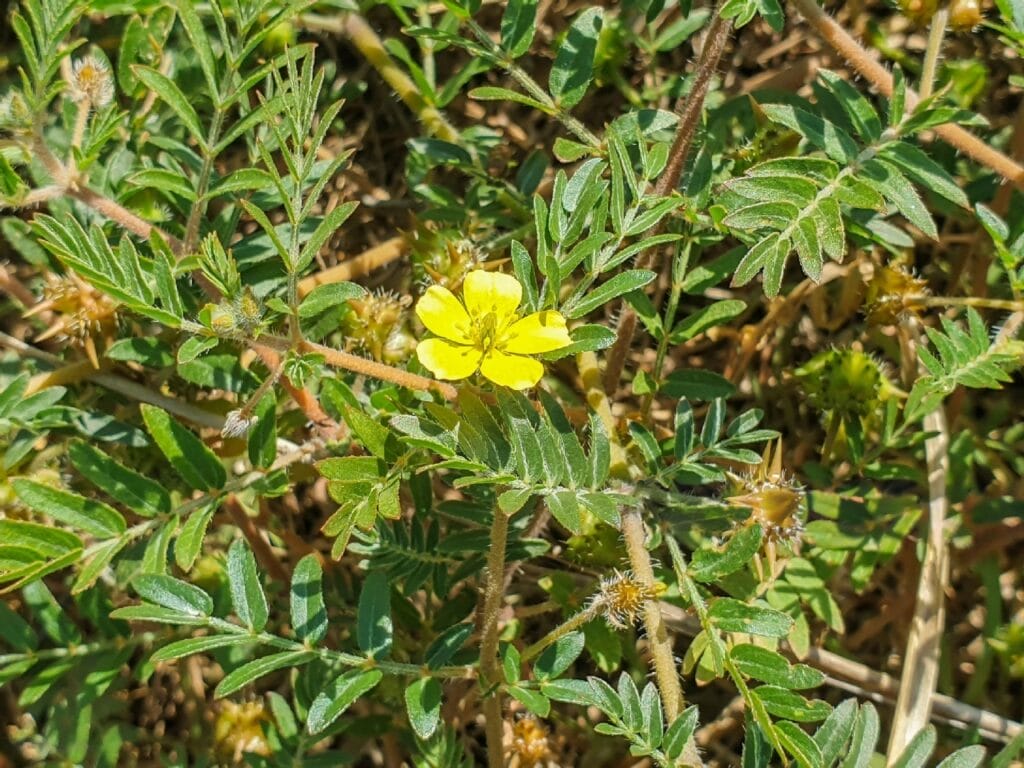
Let’s tackle those pesky goat head thorns with our own two hands.
We’ll discuss the best time to pull these weeds, how to extract the thorns safely and effectively, and what to do with them once they’re out of the ground.
It will take some elbow grease, but I assure you, it’s doable.
The Right Timing: When to Pull Goat Head Weeds
In dealing with goat head thorns, I’ve found that the best time to pull these pesky weeds is during the late spring or early summer when they’re just starting to sprout.
Here’s a strategy I’ve found to be effective:
- Get rid of goat head plants by hand.
- Pull the plants when the soil is damp; it makes it easier.
- Make sure to wear gloves to avoid getting pricked by the thorns.
- Dispose of the plants properly to avoid re-infestation.
- Use a weed killer.
- Apply a pre-emergent weed killer in the early spring.
- Regularly check for and remove goat heads.
- This prevents the seeds from spreading and sprouting new plants.
Mastering Thorn-Extraction Techniques for Safety and Effectiveness
Before we dive into the specifics of mastering thorn-extraction techniques, I can’t stress enough how important it is for your safety and the effectiveness of the removal process to understand the nature of goat head thorns. These goat head burrs, or stickers as some call them, are sharp and can easily penetrate skin or gloves.
To eliminate the goat head thorns effectively, I’ve developed a simple table to follow:
| Technique | Effectiveness |
| Hand-Pulling | High |
| Using Tool | Very High |
| Mowing | Medium |
| Burning | Low |
| Chemical Treatment | High |
Safe Disposal of Extracted Goat Head Thorns
Once I’ve successfully extracted the goat head thorns by hand, it’s critical to dispose of them safely to prevent re-infestation or injury. The safe disposal of extracted goat head thorns is a key part of my strategy to eliminate goat heads naturally.
Here’s my go-to method:
- Collect all mature goat heads and plant debris in a durable bag.
- Don’t miss the tiny fragments; they can still grow into new plants.
- Seal the bag tightly to prevent the spiky nuisances from escaping.
- Double bagging adds an extra layer of security.
- Dispose of the bag in a way that will destroy the plant.
- Incineration is a great option, but ensure local regulations allow it.
This method ensures the disposal of goat head debris effectively and helps maintain a thorn-free yard.
Turn to Technology: Using Mechanical Tools to Kill Goat Heads
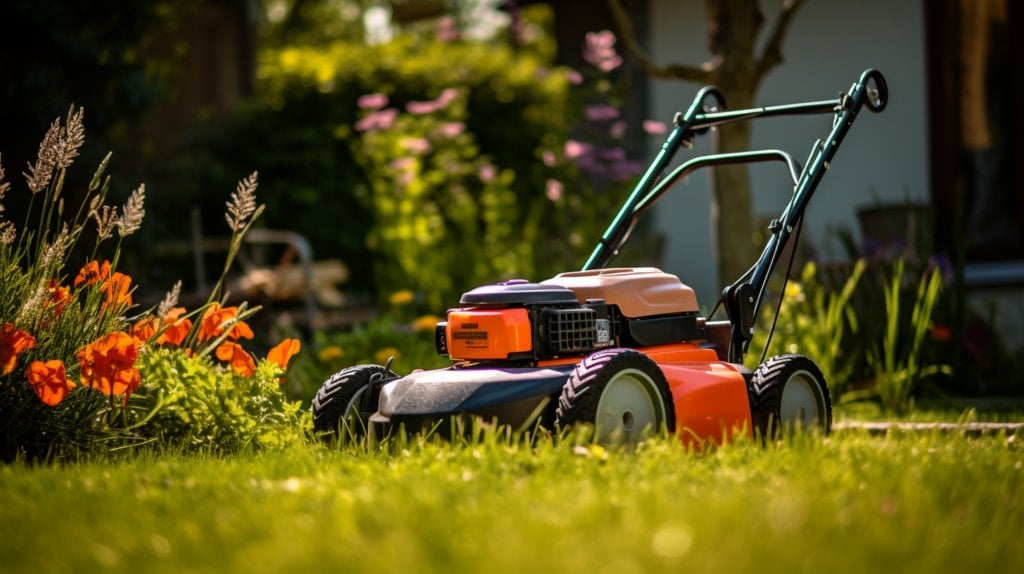
Now, let’s switch gears and explore how technology can aid us in our battle against goat head thorns.
From powerful rotocultivators to high-quality weed whackers, mechanical tools can provide efficient and effective solutions.
Of course, it’s not just about having the right tools but also knowing how to maintain them for long-term use.
The Power of Rotocultivators in Uprooting Thorns
Why shouldn’t I turn to the power of modern machinery like rotocultivators to help me eradicate those pesky goat head thorns? As a tool designed to penetrate deep into the soil, rotocultivators are incredibly efficient at getting rid of weeds, especially those with stubborn taproots.
In my quest for a goat head-free garden, here’s how I use a rotocultivator:
- First, I rake the area to remove surface debris. This allows the rotocultivator to work more effectively.
- I then power up the rotocultivator and dig into the soil. Seeing it churn up the earth, uprooting the thorns is satisfying.
- After several passes, I rake again to gather the uprooted thorns for disposal.
Harnessing technology, I’ve found, is key to winning the war against goat head thorns.
Quality Weed Whackers for Efficient Goat Head Control
I’ve used several weed whackers, and let me tell you, not all are created equal. Still, a quality weed whacker can make a difference in controlling goat head thorns.
To eliminate the goat heads that can grow in your garden, consider investing in quality weed whackers for efficient goat head control. They’re designed to cut through the toughest weeds, making killing goat heads in gardens easier.
Contrary to popular belief, mechanical tools such as weed whackers often outperform common weed-killer sprays. They provide a direct, concentrated attack on the invasive plants, reducing the chances of regrowth.
Maintenance Tips for Mechanical Weed Control Tools
Let’s switch gears and discuss the importance of maintaining these mechanical weed control tools, as their effectiveness in killing goat heads depends greatly on proper care and use. With my maintenance tips for mechanical weed control tools, you’ll free your garden from this pesky weed species.
Here are some pointers:
Cleaning and Care: After each use, clean the tool to remove any clinging dirt or weed remnants.
- Dry the tool properly to prevent rusting.
Proper Use: Use a weed puller for perennial weeds.
- Slowly pull the plant upwards to ensure you remove the entire root system.
Regular Checks: Check your tools often for wear and tear.
- Sharpen cutting tools to maintain their effectiveness.
With these tips, your fight against goat heads will be much easier.
Delving into Chemical Warfare: Using Weed Killers Against Goat Head Thorns

Now, let’s shift our focus to the use of weed killers as a means to combat goat head thorns.
We’ll explore how to select the most effective herbicide and the correct dilution and application techniques.
We’ll also cover the essential precautions and safety measures to remember when working with these chemicals.
Choosing an Effective Herbicide for Goat Head Weeds
While I’m a big fan of organic solutions, there’s no denying that sometimes you’ve got to bring out the big guns and select an effective herbicide to obliterate goat head thorns. Choosing an effective herbicide for goat head weeds can be daunting, but I have a few go-to options to help you.
- Glyphosate-based weed herbicides are a reliable choice. Be cautious, though, as they can harm non-target plants.
- Homemade weed killers can be a safer alternative. Mix horticultural vinegar with some dish soap; it can do wonders.
- Pre-emergent weed killers are another great option. They prevent all seeds from sprouting, offering a proactive approach.
Dilution and Application Guidelines for Weed Killers
Often, I find that knowing how to properly dilute and apply weed killers is just as important as selecting the right one. It’s a step that shouldn’t be overlooked in your mission to eradicate goat head thorns.
Following the dilution and application guidelines for weed killers ensures you not only kill weed seeds but also prevent new ones from sprouting.
Pre-emergent weed killers prevent all seeds, not just the invasive weed plant, from germinating. This is particularly useful for goat head thorns, notorious for rapid reproduction.
Precautions and Safety Measures When Using Herbicides
I’m about to delve into the importance of taking certain precautions and safety measures when using herbicides to wage a chemical war against pesky goat head thorns. It’s crucial to understand this isn’t a simple task, and the best way to eliminate these thorns is to balance chemical and biological control methods.
Here are some tips to ensure safety:
Always wear protective gear:
- Gloves and goggles are a must to prevent skin and eye irritation.
- A mask can prevent inhalation of harmful herbicide vapors.
- Follow instructions from reliable biological control suppliers and herbicide manufacturers.
Adopt a sustainable approach:
- Rotate herbicides to prevent resistance.
- Use non-chemical methods to kill goat heads without causing environmental harm.
Adopting Preventive Measures: How to Keep Goat Head Thorns at Bay
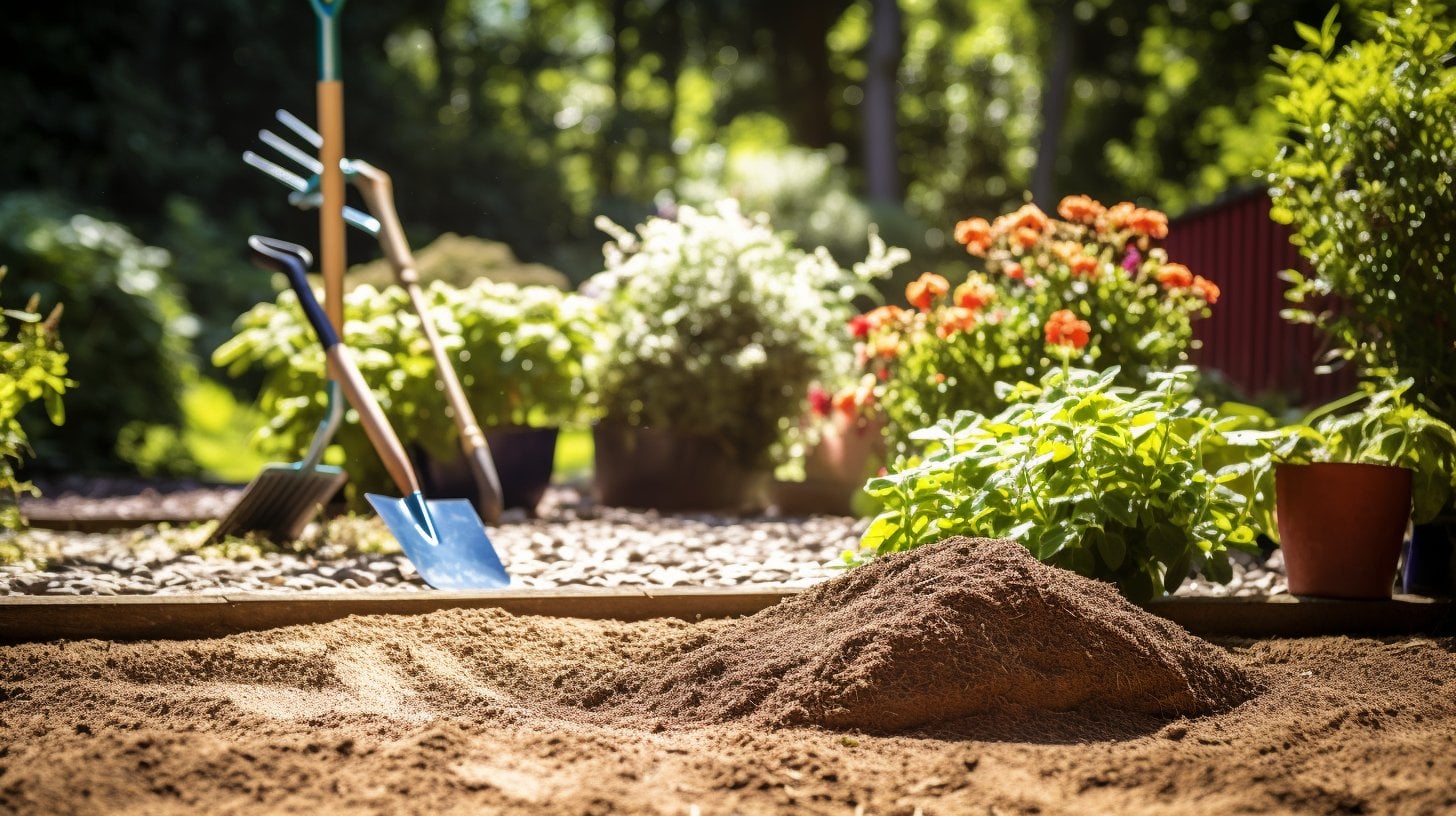
Now, let’s focus on prevention because it’s always better to keep a problem at bay rather than deal with it later, right?
I’ll be talking about mulch’s role in suppressing goat head weeds.
Another preventative measure is using smart planting strategies that can curb thorn growth.
Additionally, regular monitoring and early treatment are of utmost importance in preventing the spread of goat head weeds.
These preventative measures could save you a lot of time and trouble.
The Role of Mulch in Suppressing Goat Head Weeds
Let’s dive into how using mulch can play a crucial role in suppressing the growth of pesky goathead weeds. Mulch is a physical barrier, preventing the seeds from germinating and sprouting. It effectively creates an unfavorable environment for the plant and seed pods.
Let’s break it down:
- Mulch to suppress goat head weeds
- It adds a layer of material on the soil surface
- This disrupts weed growth
- It prevents all seeds from sprouting
- How it prevents germination
- It blocks the light necessary for germination
- It creates a physical barrier for seedlings
- The role of mulch in plant and seed pod suppression
- It decreases soil temperature
- It reduces the availability of water for weeds
Thus, mulch is a great tool to keep those thorns at bay.
Smart Planting Strategies for Curbing Thorn Growth
Before we delve deeper into smart planting strategies, it’s vital to note that prevention is just as important as removal in the fight against goat head thorns. A well-planned garden can be your first line of defense. The key is to stop the seeds of these plants from growing, and that is where smart planting strategies for curbing thorn growth come into play.
Here’s a compact guide to help you:
| Strategy | Description |
| Ground Covering | Plant dense, low-growing plants to suppress weed growth. |
| Regular Watering | Overwatering kills the goat’s head plant. |
| Timing | Plant in early spring to outcompete goat head thorns. |
| Soil Health | Healthy soil supports plants that can outgrow weeds. |
When used properly, these strategies can help you get rid of goat head thorns effectively.
Regular Monitoring and Early Treatment to Prevent Infestations
I firmly believe in the saying, ‘prevention is better than cure,’ and in the case of goat head thorns, regular monitoring and early treatment can save us a lot of trouble.
Here are some preventive measures I recommend to keep these thorns at bay:
- Regular Monitoring: You must keep a sharp eye on your property. Identify any growth early to prevent it from maturing and producing seeds per season.
- Biological Control: Use helpful insects or goats to keep the thorn population in check.
- Early Treatment: Once identified, take swift action to kill goat heads. This might include uprooting the plants or using a specialized herbicide.
After successfully ridding your yard of menacing goat head thorns and reclaiming your peaceful walks; next, ensure your home’s tranquility by learning how to get rid of earwigs in your house fast with our proven tips!
Frequently Asked Questions
What Are Some Natural Predators of Goat Head Thorns?
In my experience, there aren’t many natural predators for goat head thorns. However, I’ve noticed that goats, sheep, and chickens seem to eat them, helping control their spread naturally.
Are Goat Head Thorns Harmful to Pets or Livestock?
Yes, goat head thorns can be harmful to pets or livestock. They’re sharp and can pierce their skin, causing pain or injury. It’s important to clear these thorns from areas where pets or livestock roam.
How Long Does It Take for a Goat Head Thorn Plant to Mature and Produce Thorns?
In my experience, a goat head thorn plant typically matures and starts producing thorns in about 3 to 4 weeks. However, it’s dependent on factors like temperature, soil quality, and water availability.
What Kind of Climate or Soil Conditions Do Goat Head Thorns Thrive In?
In my experience, goat head thorns flourish in warm, dry climates and prefer sandy or gravelly soils. They’re pretty hardy, so they can adapt to various conditions.
Can Goat Head Thorns Be Used for Any Beneficial Purposes, Such as Herbal Medicine or Compost?
I’m not aware of any medicinal benefits from goat head thorns. However, they can be composted as green material. Still, ensuring they’re fully decomposed is crucial to prevent propagation in the compost pile.
Conclusion
So, that’s it, folks – your quick guide to tackling those pesky goat head thorns.
Whether you’re plucking them by hand, using mechanical tools, or opting for the chemical route, remember that persistence is key.
And don’t forget the importance of preventive measures to keep these thorny nuisances at bay.
With some dedication, you’ll find your yard free of goat head thorns.
Good luck!

